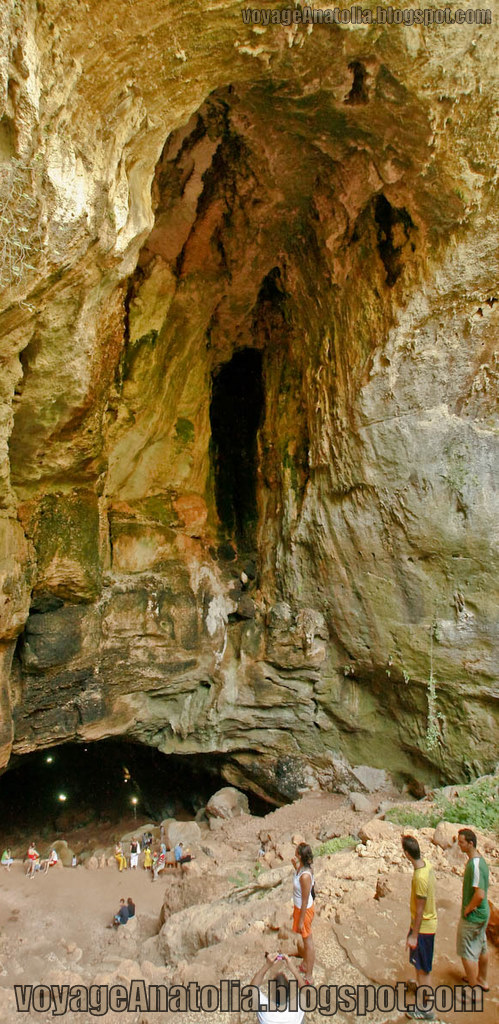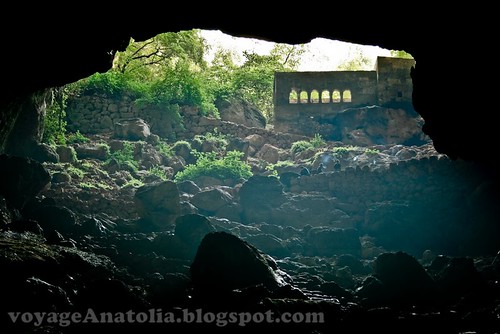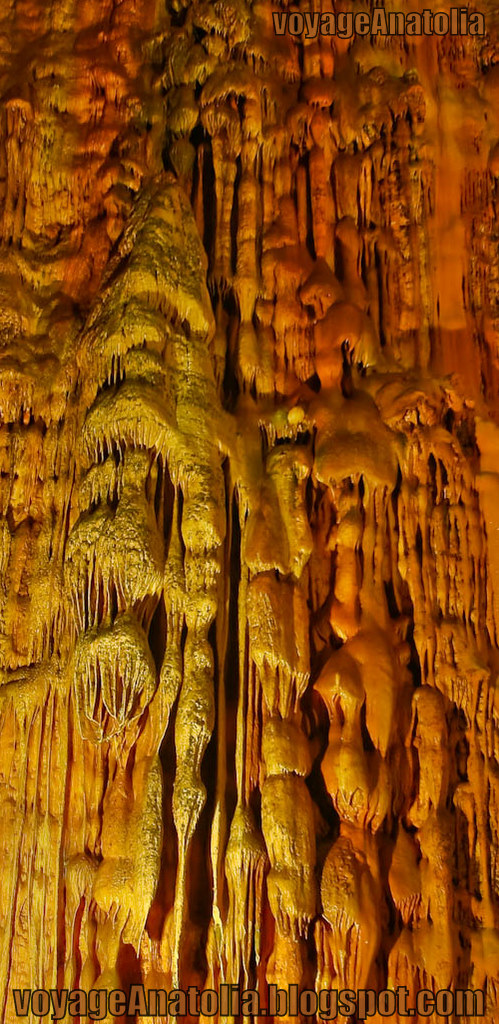
Corycian Cave: Arima, couch of Typhoeus:
"there in earth's secret places. For there she has her cave on the underside of a hollow rock, far from the immortal gods, and far from all mortals. There the gods ordained her a fabulous home to live in which she keeps underground among the Arimoi, grisly Ekhidna."
In the Corycian Cave, 20 stadia inland, says Strabo, the best crocus (saffron) grows. He describes this cave as a great hollow, of a circular form, surrounded by a margin of rock, on all sides of a considerable height; on descending into this cavity, the ground is found to be uneven and generally rocky, and it is filled with shrubs, both evergreen and cultivated; in some parts the saffron is cultivated: there is also a cave here which contains a large source, which pours forth a river of pure, pellucid water, but it immediately sinks into the earth, and flowing underground enters the sea: they call it the Bitter Water. Pomponius Mela (i.13) has a long description of the same place apparently from the same authority that Strabo followed, but more embellished. This place is probably on the top of the mountain above Corycus, Mersin, Turkey.
This place is famed in Greek mythology. It is the Cilician cave of Pindar (Pythian Ode i. 31), and of Aeschylus (Prom. Vinct. 350), and as Arima, couch of Typhoeus, it is the lair of Zeus' fiercest opponent, the giant Typhon or Typhoeus.

Arima, couch of Typhoeus, as Homer expresses it, is a hard-to-place site in Greek mythology, said to be where Zeus defeated Typhoeus and where Echidna dwells.
"there in earth's secret places. For there she has her cave on the underside of a hollow rock, far from the immortal gods, and far from all mortals. There the gods ordained her a fabulous home to live in which she keeps underground among the Arimoi, grisly Ekhidna." Hesiod remarks...
in the "highly celebrated Corycian cave", "once, among the Arimoi" Zeus had battered Thyphoeus, with "fifty" heads... Pindar notes...

PHOTO: A Journey to the Center of the Earth by ancient-anatolia.blogspot.com